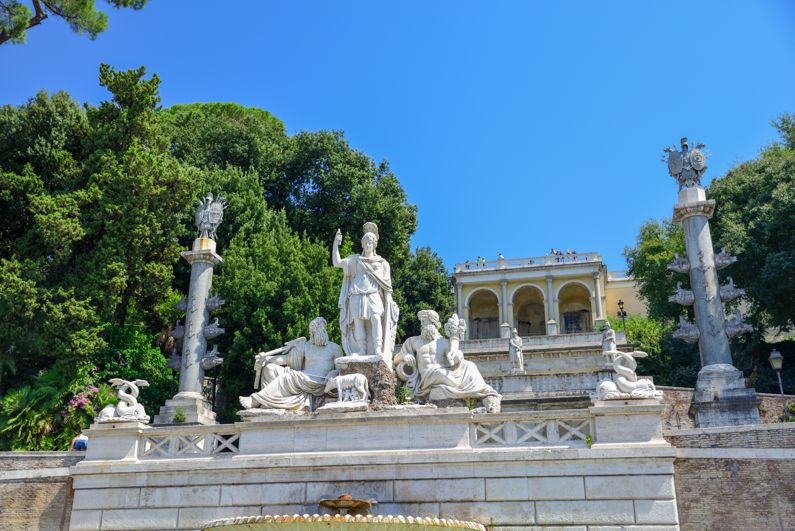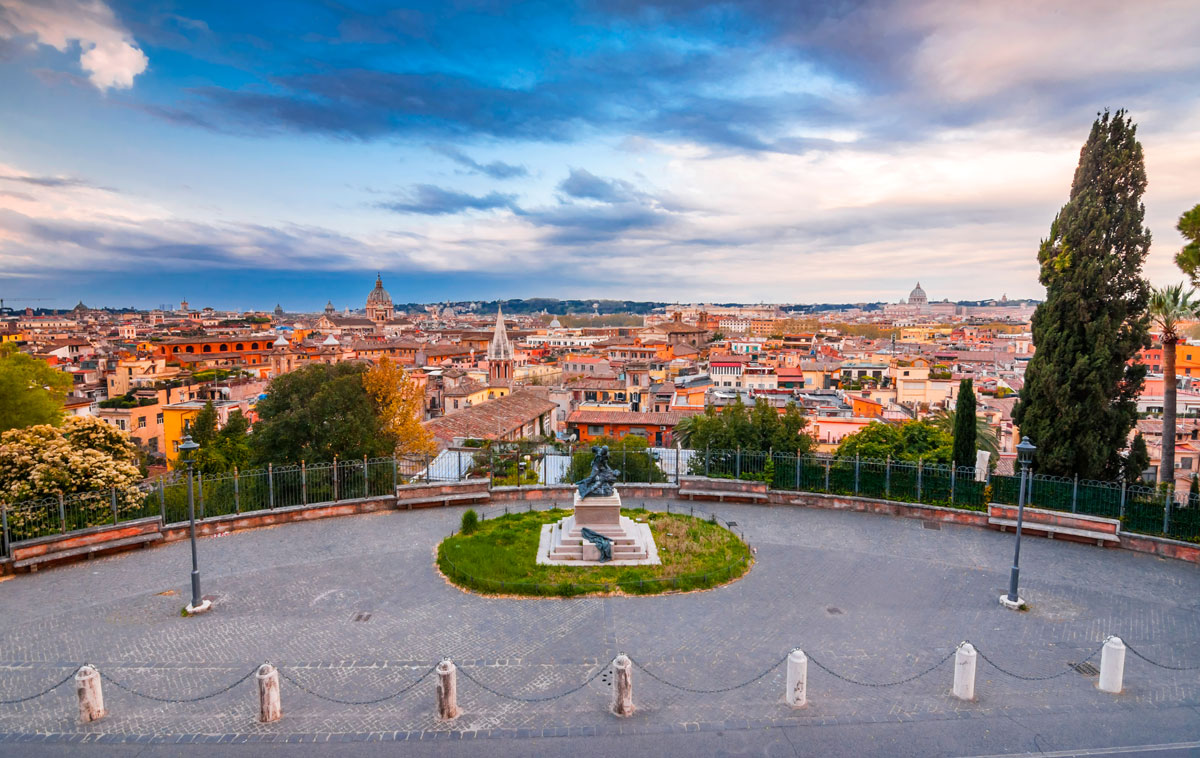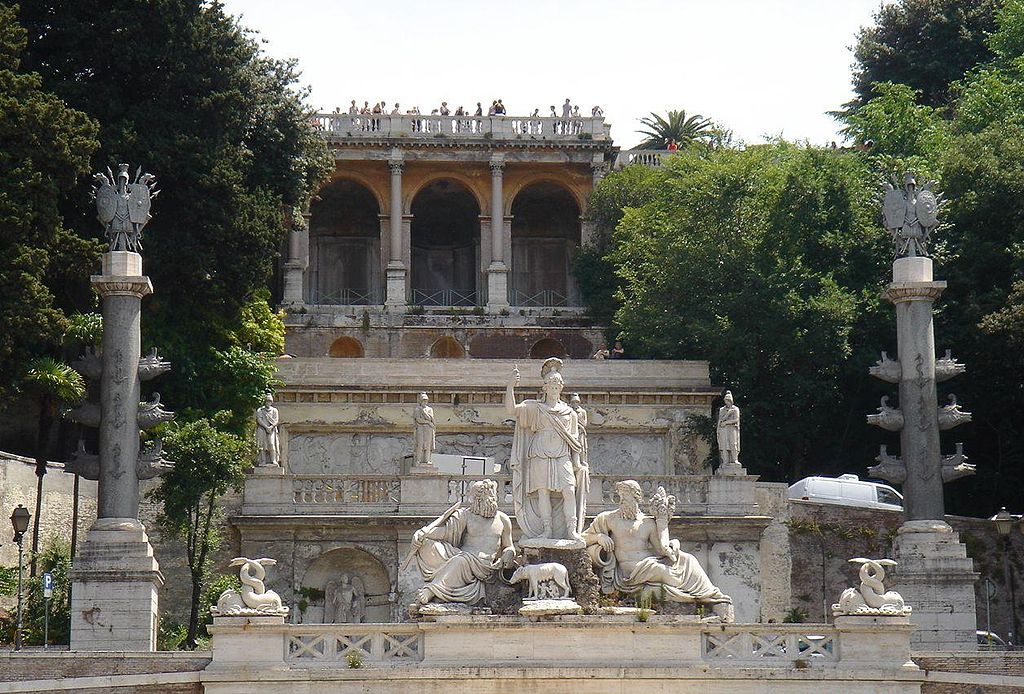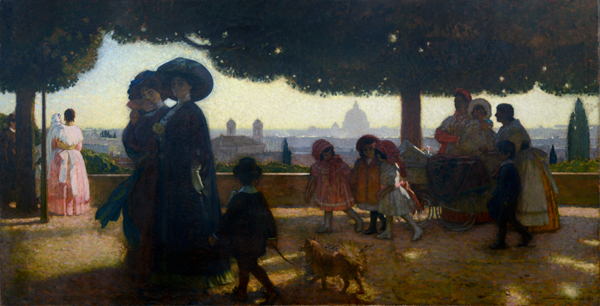This vCard is For Sale, Buy it for: $700,00
Walk of the Pincio

Historical walk with over 200 busts of eminent personalities, gardens and picturesque views of the city, in the Municipio I area, IV district - Campo Marzio in Rome.

The Walk of the Pincio (Passeggiata del Pincio), located between Piazza del Popolo, Villa Medici and the Muro Torto, with a direct connection to Villa Borghese through via delle Magnolie, was conceived by the Napoleonic administration, established in Rome since 1810, to meet multiple urban planning needs. and social.

On the one hand, the arrangement of Piazza del Popolo itself as the main entrance to Rome from the North, on the other the need to provide the "second city of the empire" with an urban space aimed at the recreation and health of the people.
Completed between 1811 and 1823, the Promenade was, until the mid-twentieth century, the real city park, the urban promenade, the garden of the Roman people who were able to enjoy countless events and shows, from pyrotechnic pinwheels and from the concerts of the band of maestro Alessandro Vessella, at the turn of the nineteenth and twentieth centuries, up to today's musical events. Even today it is a destination for walks and the Napoleone square, which overlooks Piazza del Popolo, is a favorite place for Romans and tourists.

In this area some important families of ancient Rome had their horti: first the Acili and then the Anici and the Pincii, who gave the name to the entire hill. Particularly famous, in this context, were the horti of Lucullus.
In the second half of the 15th century, the acquisition of the area by the Augustinians of Santa Maria del Popolo gave new impetus to the area. At the beginning of the seventeenth century they built a large farmhouse, over the remains of a Roman cistern, for the use of the vineyard they had planted there.
To get to the Pincio Walk project, however, we must go back to 1810 when the Napoleonic administration decided to create a public walk and Giuseppe Valadier presented a project in which the Piazza del Popolo and the Pinciano hill were closely connected. But the central government did not approve of the ideas conceived in Rome, preferring to send the architect Louis Martin Berthault to the site, who reset the project by suggesting, among other things, the elliptical shape of the square. After 1814, after the Napoleonic era, the completion of the project and the construction of the work were entrusted again to Valadier, who carried them on during the Restoration, until 1834.

With the creation of the modern Municipality, in 1848, the Promenade was sold to the Town Hall. The following year the war events unleashed by the Roman Republic, during which the Pincio was fortified and militarized, produced enormous devastation. After the Mazzinian interlude, the damage was repaired, the first 50 busts of illustrious men were placed, commissioned by the republican government, and the architect Poletti designed various pieces of furniture. From 1853 the care of the gardens was entrusted to the municipal public service, whose director, Luigi Vescovali, made use of the experience of the Savoyard gardener and nurseryman Francesco Vachez, who, between 1861 and 1866, undertook a radical transformation of the Promenade , designing a new layout of the avenues and the garden in an "English" style, eliminating the racecourse designed by Berthault on the side towards Villa Borghese and introducing new curved paths between irregular flower beds.

After the unification of Rome to the new Italian State and the establishment of the new unitary administration, the Municipality entrusted the care of the Promenade to the V Edilità Office, directed by Alessandro Viviani, which also brought together the Giardini Service: the architect responsible was Gioacchino Ersoch, who between 1873 and 1880 will carry out numerous furnishing and maintenance interventions, including the sculpture of the hydro-timer and the water tank in "Swiss" style.
From the end of the nineteenth century the face of the Promenade will not substantially change, except for the inclusion of new furnishing works, especially monuments, which will accentuate its celebratory character, effectively transforming it into an open-air "pantheon" of Italian memory. The last interventions will be the construction of the overpass on the avenue of the walls for the connection with Villa Borghese, which has become a public park; in 1925-26 the small building for the lift from Viale del Muro Torto, designed by the architect Galli; finally, in 1936, the creation of the fountain-exhibition of the new Acqua Vergine in the loggia of the last perspective on Piazza del Popolo, by another municipal architect, Raffaele de Vico, who took up an original idea by Valadier from 1815.
On the side of monumental furnishings, in the last decades of the nineteenth century monuments and decorative fountains were still erected: in 1883 the monument to the Cairoli brothers by Ercole Rosa was placed in the semicircular belvedere on the avenue of Villa Medici and in 1887, at the beginning of the same avenue , the column celebrating Galileo's imprisonment in the Villa Medici, inflicted on him by the Inquisition; in 1911, on the occasion of the fiftieth anniversary of the proclamation of Rome as the Capital, the monument to the Free Municipalities of Italy and the battle of Legnano, executed by the sculptor Botti, was erected in a small garden on the third ramp; in 1913 it was placed in the center of a cliff fountain in the garden on the right of the Casina Valadier L'Anfora by Amleto Cataldi, sculpted in 1912.
Finally, in 1922, the monument to Enrico Toti was erected, the work of Arturo Dazzi.
After the great commissions of 1849 and 1871, new executions and placements of herms of illustrious men, entrusted to more or less well-known sculptors, followed one another without stopping until the Second World War, until reaching the number of 229. today inside the Promenade, together with the obelisk, the fountains, the aforementioned "classical" furnishings (three seated female statues and the Esculapio) arranged by Valadier, and the "monumentini" dedicated to the effigies of Valadier (bust of Luigi Majoli, 1873) and of his father Angelo Secchi (bust of Giuseppe Prinzi, 1879), an important astronomer of the Vatican Observatory, whose herm is placed on a base with a hole in the center that marks the passage in that point of the terrestrial meridian.
Video: Walk of the Pincio
Map: Walk of the Pincio
Address:
Roma (RM) Lazio
Latitude: 41.9099469
Longitude: 12.479755
Site: http://www.sovraintendenzaroma...
vCard created by: Pierpaolo Dori
Currently owned by: 1224815540898055
Type: Area
Function: Park
Creation date:
Last update: 15/08/2022
vCard Value: $700,00
vCard Views: 1267